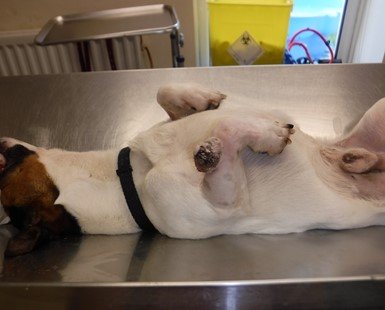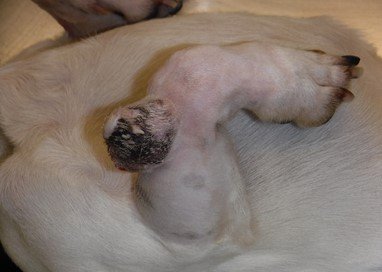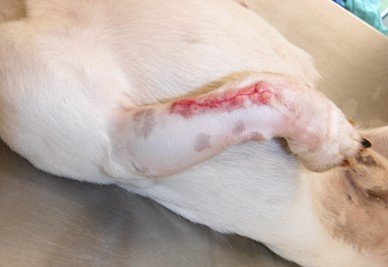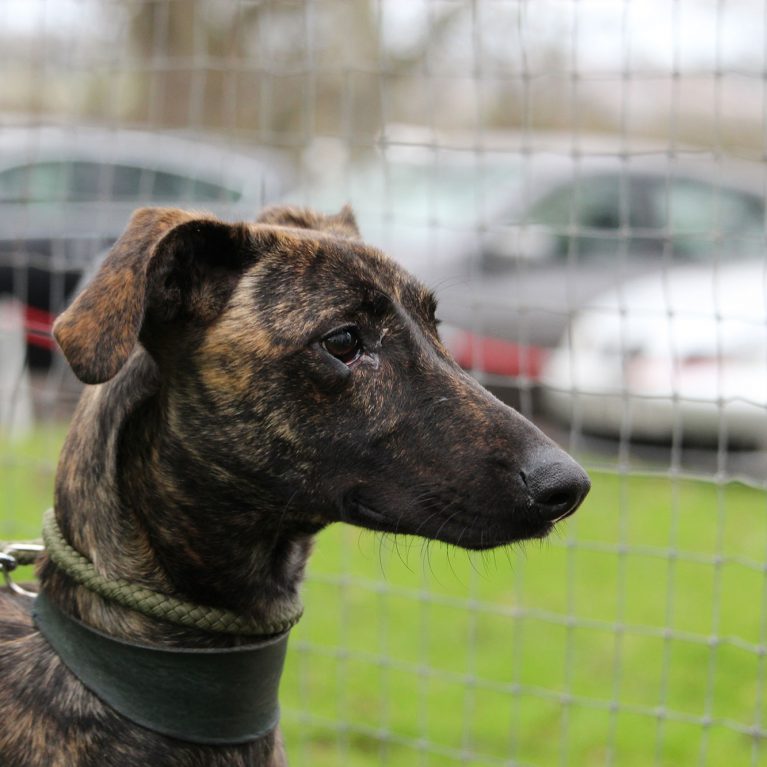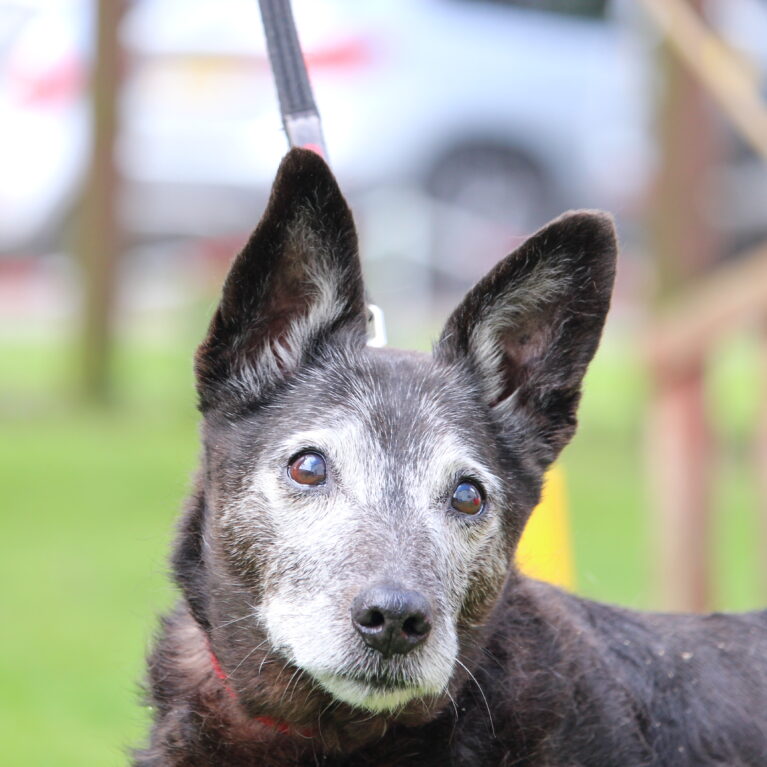Ollie’s Lumps
Published: April 4th, 2021
Ollie’s Lumps
Published: April 4th, 2021
This article is from the Winter/Spring 2021 edition of our quarterly magazine
4 year old Ollie, a Jack Russell Terrier, was found straying. No-one came forward to claim him, so he came to our Vet for a full check-over, vaccination, neutering, micro-chipping and treatment for fleas and worms. He had a growth in the skin of his right foreleg measuring 4cm by 2cm, quite sizeable for a small dog.
Stray Aid does not have the funding or facilities to carry out biopsies and tests on any lumps. However, the Vet felt it would be best for Ollie to have the lump removed, before it grew larger. There isn’t much loose skin on dogs’ legs, and Ollie’s lump was of a size that meant it could be removed and the skin edges stitched together. As you can see, the wound closed well and went on to heal without complications. Thankfully, Ollie found his new home quickly, and we wish him all the best.
Lumps are more common in older dogs but younger dogs can be affected too. Most are benign (non-cancerous) although some can be malignant (cancerous). The older the dog, the higher their chance of malignant lumps.
Benign lumps do not invade other tissues or spread to other sites beyond where they are present. They can cause problems as they grow in size, such as restricting movement or they may start to irritate the dog. It is always easier to remove a small lump, especially in places where the skin is not loose. If Ollie’s lump grew much bigger, removal would have become much more difficult.
We would like to thank all our Team SAFE members for helping to fund our vet team. Join today from as little as £5 per month and help ensure our work can continue.
MALIGNANT LUMPS
These grow and can spread throughout the body (metastasise) to affect organs such as the liver, lungs, brain, bones. They can spread locally to invade and destroy nearby tissues. It is important that malignant lumps are surgically removed as soon as they’re diagnosed to reduce the risk of them spreading. Chemotherapy and radiation therapy can also be used.
Any lump or bump should be checked by your Vet, as the earlier it is diagnosed, the more successful the treatment will likely to be. If your dog doesn’t have any lumps or bumps, you should check your pet on a regular basis. Run your fingers through their coat and if you feel a lump, make an appointment with your Vet.
Please remember that it is very important to consult your vet if you notice any bumps or lumps on your pet, or any other signs that something might not be right, such as loss of appetite or change in movements. Animals are good at hiding pain and discomfort, so the first signs something is wrong may be not be obvious or clear.
